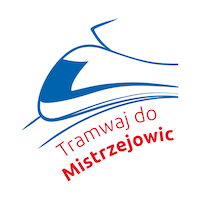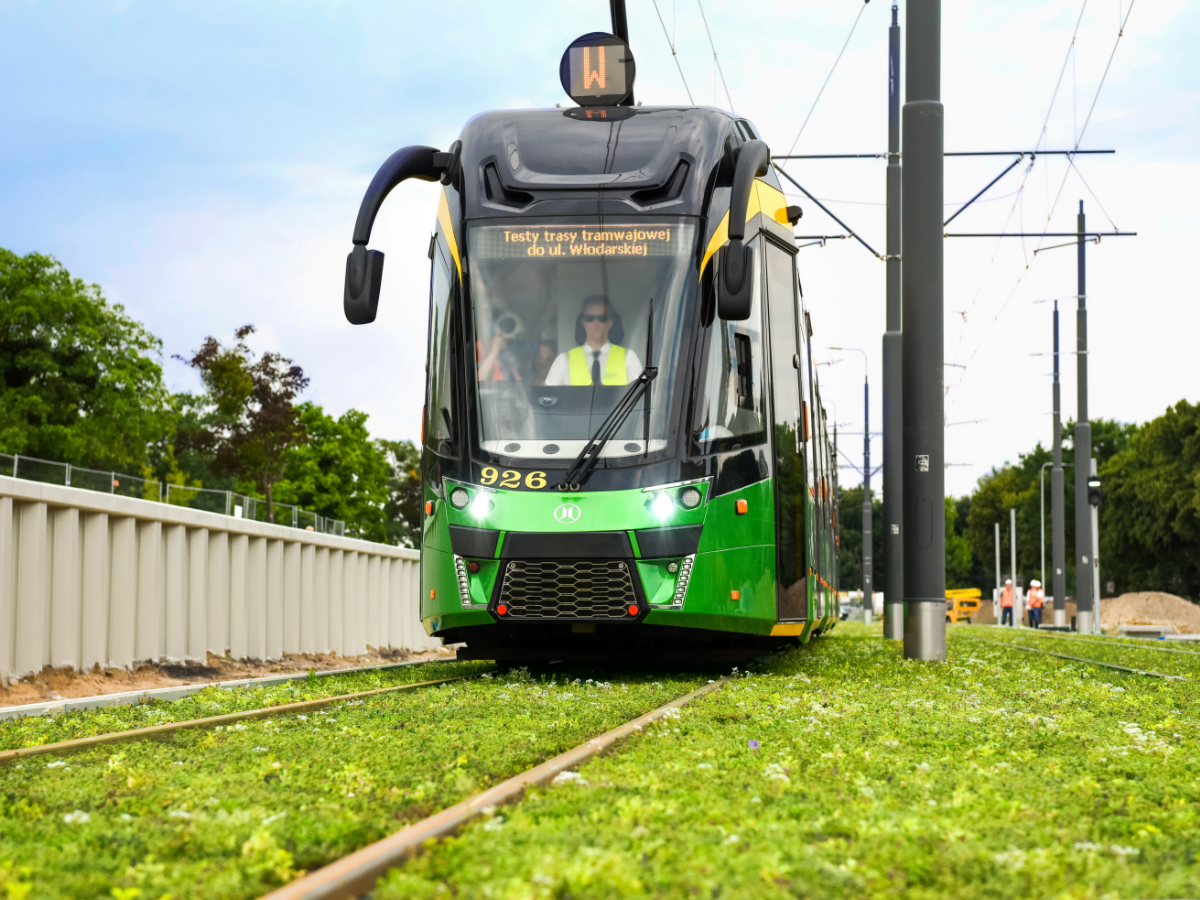As much as 74% of the area used for the construction of the tram route to Mistrzejowice is to be biologically active. An important element will be the so-called green trackbed where sedum mats will be installed. It is an eco-friendly and cost-effective alternative to a traditional lawn.
Green trackbed technology is becoming increasingly popular in Polish cities. It is not only aesthetic but also eco-friendly and cost effective. This solution enables filtration of pollution, e.g. dust stirred up by vehicle traffic, and, to a certain extent, reduces the noise by absorbing acoustic energy. Therefore, when designing KST IV, the private partner undertook to introduce greenery within the trackbed area, wherever technically feasible, instead of using concrete or crashed stone ballast. And this all will be done in an exceptional way.
Colorful drought-resistant carpets
Instead of traditionally sown grass, the trackbed will be decorated with sedum mats made of drought-resistant plants. In spring and in summer, sedums bloom beautifully creating a colorful carpet, whereas in autumn, their colors change to brown and red. So, they please they eye, regardless of the season. What is more, installation of sedum mats is quick and extremely easy. And what about the effect? It is immediately visible – without waiting for the greenery to sprout.
It is worth mentioning that maintenance of sedum mats is easy and cheap – they do not have to be mown or regularly watered since they are drought-resistant. As a comparison: in order to mow grass sown within the area of the designed trackbed between the intersection of Meissnera / Lema Streets and the Mistrzejowice terminus, 37,182 liters of fuel would be needed per year*. This amount refers to the mowers only (excluding the fuel needed to transport the equipment, personnel or the grass cut). In order to water such grass-covered tram tracks just once, 123,970 liters of water would be needed, totaling 5,578,650 liters of water per year!** These are real benefits for the environment (resource saving) and for the budget.
The company Tramwaje Warszawskie calculated that maintenance of 1 linear meter of a single track of a green trackbed made of sedum mats is cheaper by ca. 85 zlotys/year than maintenance of 1 linear meter of traditional lawn.
Less dust, greater diversity
As regards more mundane environmental benefits – urban areas planted with sedums are an example of green infrastructure creating the so-called green corridors which increase biodiversity and reduce the temperature of the surrounding environment. They also retain rainwater at the place of their accumulation and filtrate air by preventing dust emission. Furthermore, they reduce the level of noise generated by trams. Such a solution, the benefits of which are obvious, can be applied also on roofs of passenger waiting shelters.
* assuming that the surface area of the green trackbed amounts to 12,397 m2, the period it has to be mown lasts 6 months a year and 1.5 l of fuel is needed to mow 1 m2 of the lawn
** assuming that grass has to be watered 3 times a week during 15 weeks per year
photo: UM Poznan


